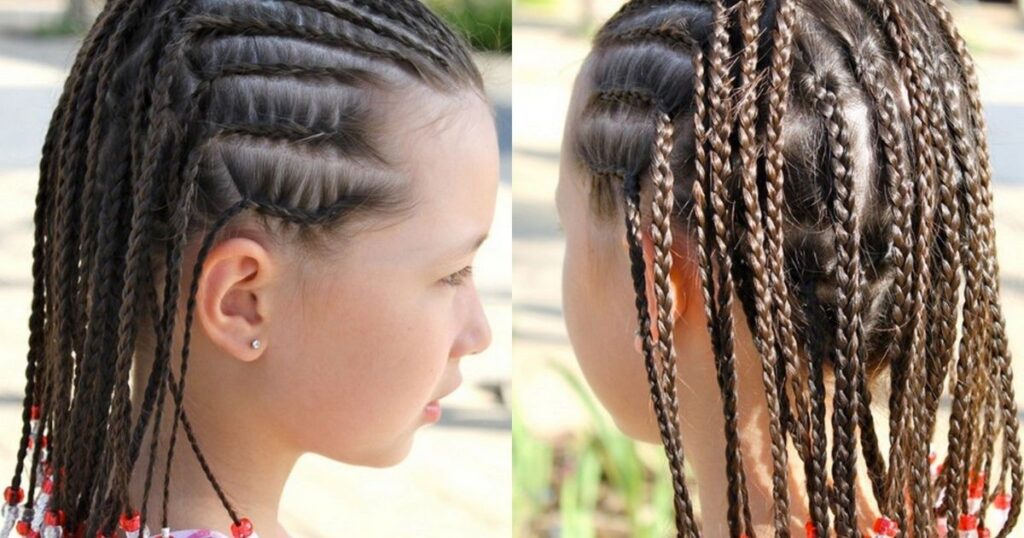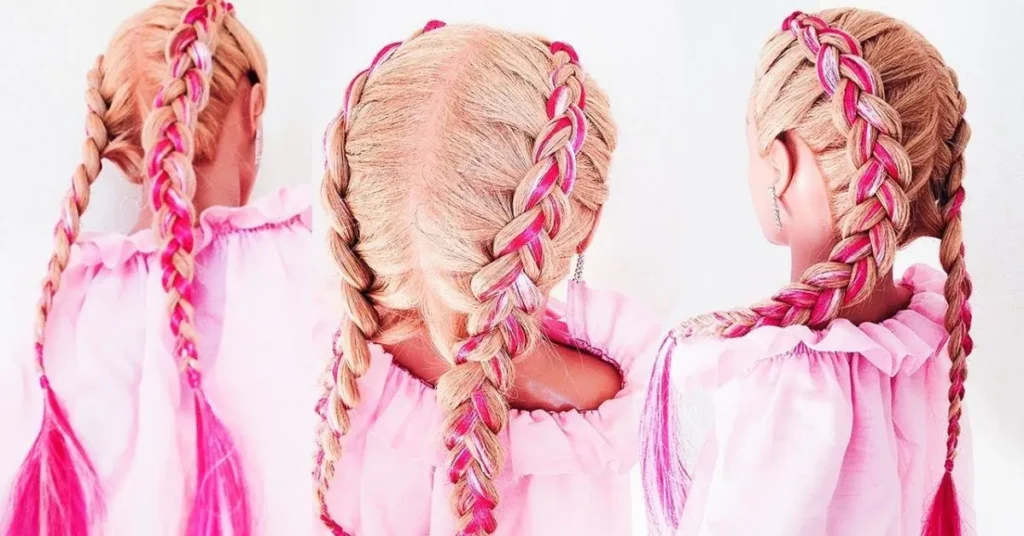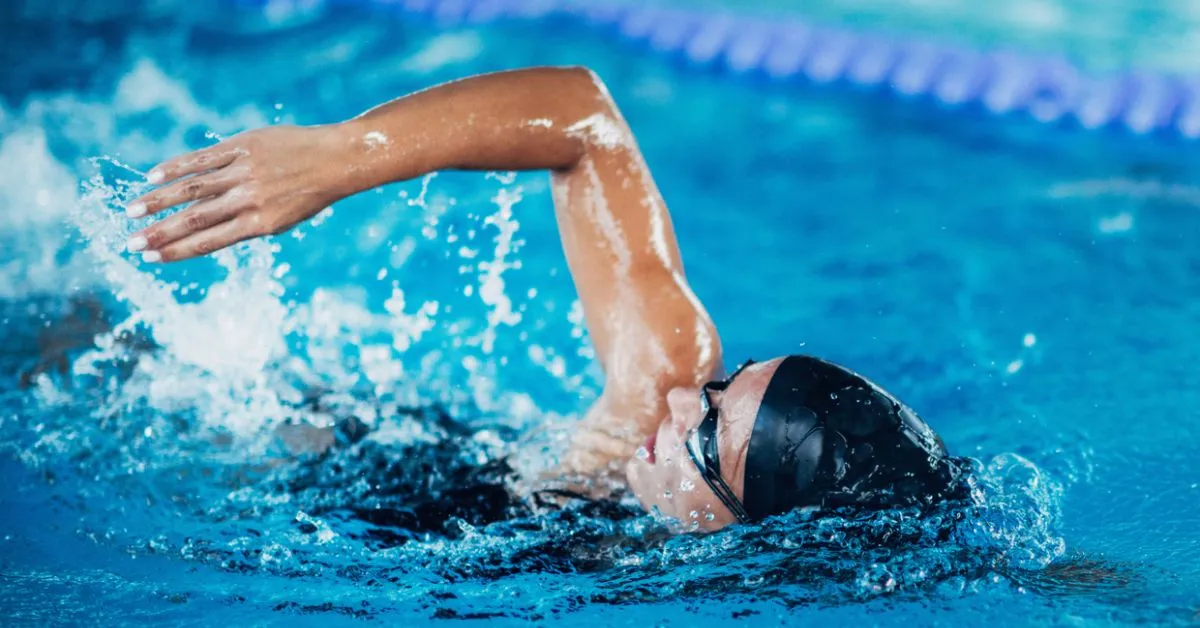Swimming along crests is usually possible but requires some precautions. Braids are a protective hairstyle that can withstand exposure to water.
Excessive exposure to chlorine or salt water can cause them to dry out or become brittle. You can swim with braids. Braids are a great hairstyle for swimming because they help keep your hair contained and prevent tangling while in the water.
Whether diving into the pool or enjoying a day at the beach. Braids can stay intact and stylish while swimming. Rinse your hair thoroughly with fresh water after swimming to remove any chlorine or salt residue. Consider using a leave-in conditioner to keep your braids hydrated and healthy.
How do you protect your braids when swimming?

Soak all my hair with water including my braid. After wetting my hair completely I wrap my braid into a bun and apply it to my scalp. I pull a swim cap over my head to protect my hair. Additionally, wear a swim cap made of silicone or lycra.
It can help keep your braids protected and water-resistant. After swimming it’s important to rinse your hair with fresh water to remove pool or ocean residue. Finally, pat your ends gently instead of towel-drying to reduce frizz and maintain their shape.
Can I get my hair wet with braids?

Wetting your braided hair can lead to frizz or unraveling if not properly cared for. Use a gentle shampoo and conditioner specifically designed for braids to minimize damage.
Avoid excessive rubbing or twisting while washing. After washing, gently pat your braids with a towel and air dry completely to prevent mildew or mold. Additionally, you can protect your braids by wearing a swim cap or wrapping up in a scarf to minimize exposure to chlorine or salt water.
Do braids last in water?
Braids can typically withstand water exposure quite well. It makes them a practical choice for activities like swimming or showering. The longevity of braids in water depends on various factors such as the type of braid. The tightness of the weave and the products used to style the hair.
Tightly woven braids with secure fastenings tend to hold up better in water compared to looser styles. Using water-resistant styling products can help prolong the lifespan of braids when exposed to moisture. Overall, while braids can endure water it’s essential to care for them properly to maintain their appearance and integrity.
Does braiding your hair protect it from chlorine?
Braiding your hair before swimming in chlorinated water can provide some protection against chlorine damage. It creates a barrier that helps prevent direct contact between your hair strands and the chlorine.
This can reduce the amount of chlorine absorbed by your hair, minimizing the risk of dryness, brittleness, and discoloration. However, it’s essential to rinse your hair thoroughly with clean water after swimming to remove any residual chlorine. Apply a nourishing conditioner to keep your hair healthy and hydrated.
How do people with braids swim?
Made from silicone, Swimma Caps stretch wide enough to cover the hair of men, women, and children sporting natural dos braids and dreadlocks and remain snug along the hairline to prevent water from creeping inside.
Can I go swimming with braid extensions?

Yes, you can go swimming with braid extensions, but it’s important to take precautions to maintain them. Before swimming, it’s advisable to coat your extensions with a protective oil or conditioner. It prevents them from soaking up too much chlorine or saltwater.
Wearing a swim cap can provide extra protection. After swimming, rinse your hair thoroughly with fresh water to remove any chlorine or salt residue. Follow up with a moisturizing shampoo and conditioner. Be gentle when washing and handling your hair to avoid tangling or damaging the extensions.
Is it better to braid hair before swimming?
Braiding your hair before swimming can be beneficial in preventing tangles and minimizing damage caused by the harsh elements of pool or ocean water. By braiding your hair you reduce the chances of it getting tangled with other swimmers or equipment.
As well as protect it from exposure to chlorine or salt water. It can dry out and weaken your strands. Braids can help maintain a neater appearance and make post-swim hair care easier. Braiding your hair before swimming can be a simple yet effective way to protect it and keep it looking healthy.
Frequently Asked Questions
Can you swim with braids?
Will chlorine damage braids?
Can saltwater affect braids?
How should I care for my braids after swimming?
Are there any special precautions for swimming with braids?
Conclusion
Swimming with braids is generally safe and feasible for most individuals. Braids can help keep hair contained and minimize tangling while swimming. It makes them a convenient option for water activities. It’s essential to take proper care of your braids and ensure they are securely tied to prevent any discomfort or hair damage.
